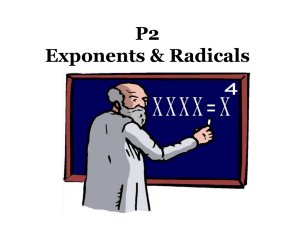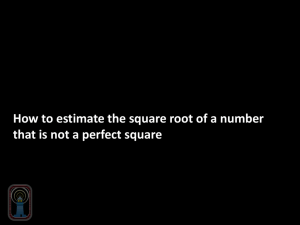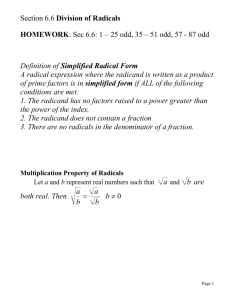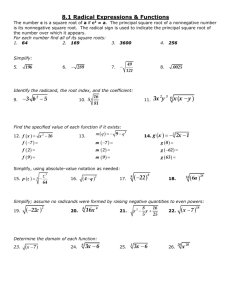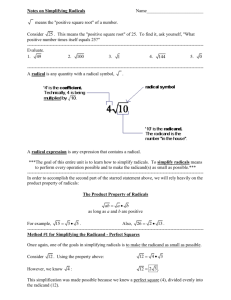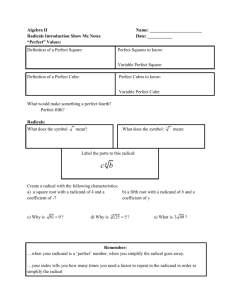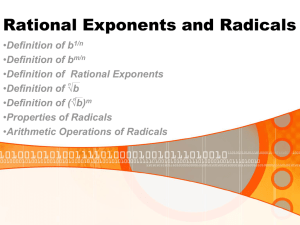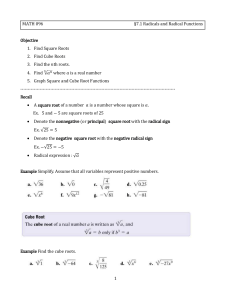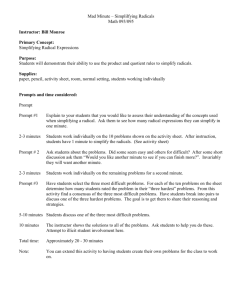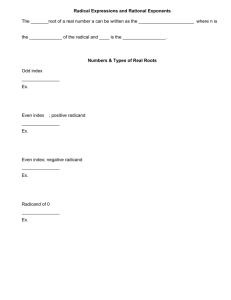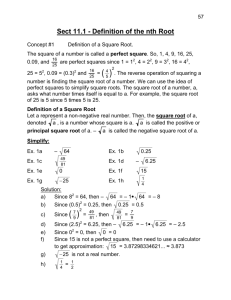Working with Roots and Radicals
advertisement
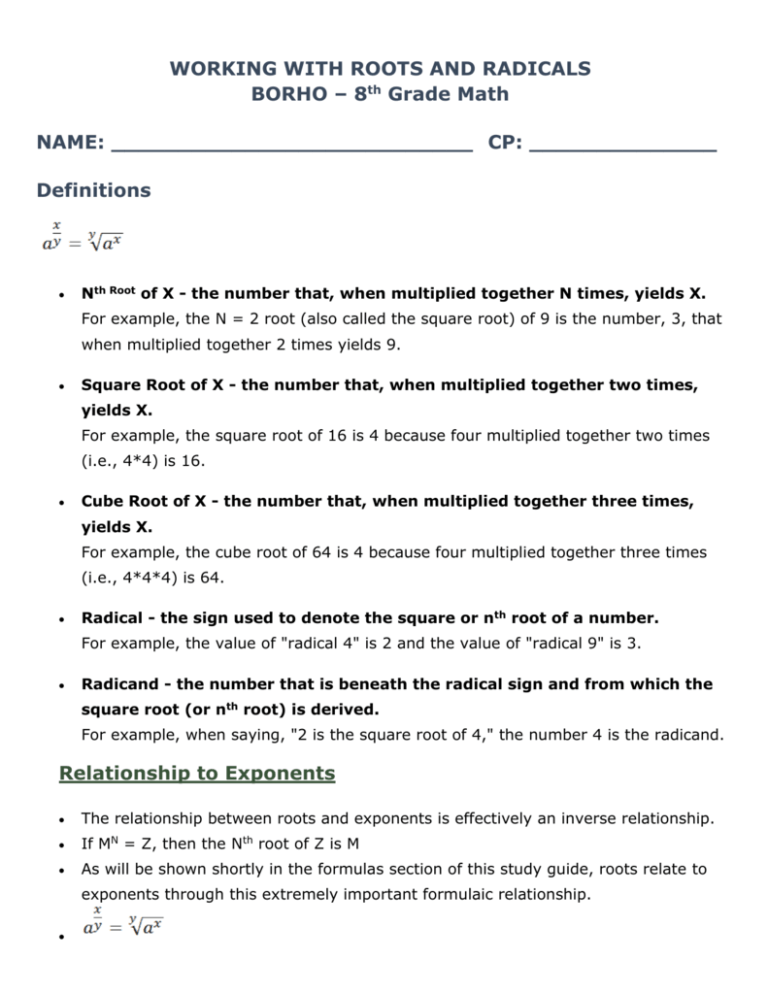
WORKING WITH ROOTS AND RADICALS BORHO – 8th Grade Math NAME: ___________________________ CP: ______________ Definitions Nth Root of X - the number that, when multiplied together N times, yields X. For example, the N = 2 root (also called the square root) of 9 is the number, 3, that when multiplied together 2 times yields 9. Square Root of X - the number that, when multiplied together two times, yields X. For example, the square root of 16 is 4 because four multiplied together two times (i.e., 4*4) is 16. Cube Root of X - the number that, when multiplied together three times, yields X. For example, the cube root of 64 is 4 because four multiplied together three times (i.e., 4*4*4) is 64. Radical - the sign used to denote the square or nth root of a number. For example, the value of "radical 4" is 2 and the value of "radical 9" is 3. Radicand - the number that is beneath the radical sign and from which the square root (or nth root) is derived. For example, when saying, "2 is the square root of 4," the number 4 is the radicand. Relationship to Exponents The relationship between roots and exponents is effectively an inverse relationship. If MN = Z, then the Nth root of Z is M As will be shown shortly in the formulas section of this study guide, roots relate to exponents through this extremely important formulaic relationship. Rules of Roots & Radicals Rule Example: Useful Radicals to Memorize In order to improve your ability to work mathematics questions successfully and quickly, it is extremely helpful to memorize a few commonly used exponents and roots: Radicals and the Sign of the Radicand There are four different cases that encompass the world of radicals. Case 1: Positive Radicand and Even Root In Case 1, it is common mathematical convention that there is only one solution and this solution is positive. For example, the square root of 4 is only positive 2, even though (technically speaking) -2 is a root since (-2)(-2)=+4. Consequently, when asked, "what is the square root of 25?" the correct answer is "only positive 5." Similarly, if asked, "what is the 4th root of 16?" the correct answer is "only positive 2" even though (-2)4 = 16 too. Case 2: Positive Radicand and Odd Root In Case 2, there is only one possible answer. By comparison and for clarification's sake, in Case 1, there were two possible answers, although mathematical convention agreed that only one of those answers (i.e., the positive one) was correct. Due to the nature of how negative numbers behave when multiplied together an odd number of times (i.e., they retain their negative sign), it is impossible to have a negative answer in Case 2. Case 3: Negative Radicand and Odd Root In Case 3, there is only one possible answer. Since the only way to have a negative product is by multiplying a negative number an odd number of times, the answer in Case 3 is always negative. In order to more clearly see this, notice that multiplying together a negative number an even number of times produces a positive number. Similarly, multiplying a positive number by itself an odd number of times produces a positive number. Case 4: Negative Radicand and Even Root In Case 4, there is no answer to this type of question within the domain of what are called real numbers. Technically, this Case can be answered using what are known as imaginary numbers--but this is well beyond the scope of what is tested. If you encounter a question such as "what is the square root of -4" the correct answer is "there is no real solution." Simplifying Radicals One important skill that is required in many problems is the ability to simplify radical expressions. While there is no formula for successfully simplifying radicals nor is there one process that will work each time, asking the following questions can provide a good framework. 1. Which terms share a common base? In general, the most important step in simplifying radicals is to write each term with a common base. For example, 3 and 9 share a common base (i.e., 3), 5 and 25 share a common base (i.e., 5), 2,4, 8, and 16 share a common base (i.e., 2). 2. Are there any duplicate terms that can be canceled? 3. Are there any perfect squares that can be removed from the square root (or, by corollary, are there any perfect cubes that can be removed from the cube root)? Since both 2 and 3 are being raised to powers of 2, this expression can be simplified even more considerably. 4. Are there any common terms that can be factored out?
